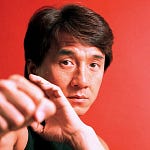Woosh, woosh…
The stick cracks against my shoulders—twice. It’s quick, but the jolt lingers.
The monk moves on to the next person.
I visit Chapin Mill, a Buddhist monastery in Batavia, New York, every few months.
For two days, I live like a real monk. Being a member of this secret society is like attending Buddhist Harvard.
There are so many culty moments, yet everyone is blissfully unaware. We walk around the zendo in circles, going nowhere in no rush.
We stroll in a single file — a long snake of brown robes plodding along. We walk in silence for five minutes.
I watch my breath and try to absorb everything that I am experiencing at the moment.
The carpet under my feet.
My breath…
The sounds of nature outside.
My body…
We’re all wearing the same brown robes. It's very culty, but I love it. The zendo features an inner loop in the middle of the room and an outer loop.
Then we sit…
And that’s it. We sit, and I watch my breath until my mind goes quiet. When it finally does, I’m peeling back a layer I didn’t know I could peel back.
The quieter your mind gets, the more grounded you become in the present. And you start noticing all sorts of details you would typically miss.
A symphony of growling stomachs bombards the pristine silence of the zendo.
Halfway into each round, one of the senior members will make his rounds around the zendo. A two-and-a-half-foot wooden stick sits before the Buddha’s feet at the front of the Zendo. He grabs it with great pomp and ceremony.
Then He Strikes Everybody Twice
One for each shoulder.
He putters from person to person, delivering two strikes each.
Woosh, woosh.
Woosh, woosh.
Woosh, woosh.
Woosh, woosh.
On and on, he would strike everyone until everyone got theirs.
Over a full day, we’re talking a few dozen strikes.
But why?
That’s the funny part. I don’t think anybody knows why. It’s just one of those traditions that made its way from Japan that survived through the decades.
But, if you ask each sensei why we do it… Let’s say I’ve yet to hear a convincing answer.
I think the answer is plain to see, but perhaps these overly domesticated white folk are a little too proud to admit where this tradition comes from.
But coming from a country where floggings were commonplace… I knew.
Still, they would always come up with some bogus reason.
“It activates the such and such glands for blah blah blah.”
It’s horseshit.
These Japanese zen masters were flogging their monks; there were no ifs ands or buts about it.
The Zen Center is a little embarrassed about this tiny piece of its history.
And for a good reason — it’s not a good look, and in today’s overly litigious society… It’s a lawsuit waiting to happen.
Thankfully, these strikes are symbolic for us all, so there’s fine art to delivering a good whack without causing pain.
I always skip of the stick during my regular sitting, at Sesshin — at the monastery — it’s mandatory.
Given the amount of violence I’ve experienced in my past, there’s never a day when I’m in the mood to get the stick. It’s too similar to the real thing for me to find joy in it. But I’m not overly triggered or disturbed by it, either.
It’s a necessary inconvenience.
You don’t notice how strange this place is until you are in disharmony with it. I mutter to myself during work, which grates on everyone’s nerves.
The Zen Center is always quiet.
Always. There are bells for everything. Bells for lunch, bells to sit, bells to wake up, bells to start work.
An intricate system of bells runs us.
You go inside the zendo, sit, face a wall for 20 hours, and come healed. I don’t even know from what. But I’m cured. Sitting for long periods is getting easier. My back is perfectly straight.
Work period.
Everyone has a job after the morning sitting. Kitchen, dining hall, bathrooms, Zendo.
We all clean silently. I screwed up my task. Didn’t read the instructions well. I hate instructions.
I preferred my dishwashing job. It was easy, immediate, and messy. Nobody spoke to each other, and everyone passed notes to communicate.
We Meditate All Day
We leave the zendo in small groups for private instruction and get into a separate line.
The person at the front of the line waits for a bell to ring.
In response, they ring an even bigger bell with a small mallet. Then, they proceed to a private room to receive private instruction.
The instruction is usually no more than 3 or 4 minutes. It comes and goes so quickly that I didn’t think it would be that useful. But vent rage, learn to be well, and then rage in a more enormous bell.
The sensei was dope.
I told her sitting was not the problem. My problem was getting motivated to meditate.
Once my day gets started, I have work to do, but all of my real world problems keep me anxious and restless.
In those moments, I need to sit more than ever. I stay on the go all day until I’m too tired.
She told me to follow my breath and that I would get into the flow while walking and out and about.
As soon as I try, I feel just enough detachment from my problems to find more time to sit. It works like a charm.
We wake up to the bell at 4 a.m.
He intermittently chimes it through the sleeping quarters to wake us all up.
I barely have enough time to brush my teeth and get outside.
We walk outside in rain, snow, or sunshine.
This first part of the day is the worst part of the experience.
Sometimes, it’s bitterly cold outside. One of the monitors walks around with a special morning bell.
We have lessons called Darma Talks.
The teacher gives a profound lecture.
We don’t say a word to each other.
We Believe in Enlightenment
It’s not just a neat concept. It’s a process.
We are doing the process.
We don’t know when or how.
But everybody here left no doubt about whether it’s possible.
Reading and journaling are against the rules. You’re not allowed to make phone calls.
I officially became a Zen Buddhist about a year ago.
It’s been a massive transition, and I hope to share some of my experiences on this Substack.
Most people don’t understand Zen.
They have notions about it from movies and TV shows. But what is it? And why do we practice it?
One of the things I love about Zen is that it is crisp, clean, and waste-free.
There’s no 900-page Bible equivalent.
Most of the verses we recite will fit into a little pamphlet.
We do chanting at the end of every sitting. We go through only about 10 chants regularly.
The most popular is called The Four Vows.
The Four Vows
Here are the lyrics:
All beings, without number, I vow to liberate.
Endless blind passions I vow to uproot.
Dharma gates, beyond measure, I vow to penetrate.
The Great Way of BuddhaI vows to attain.
This chant is our bare minimum.
Sometimes, we sit, belt out The Four Vows and that’s it.
But other times, we may do 4 or 5 chants.
So, the first thing I should mention would be, Gosh — y’all, the high drama of being inside the zendo kills me. We use a giant gong to add a certain gravitas to our chanting.
I couldn’t find a similar one to the one we have, but this one gives you the idea of how cool this thing is — when you ring it in an enclosed, dark room. Ah yes. I love it.
Another very popular chant is Master Hakuin's Chant in Praise of Zazen
Master Hakuin's Chant in Praise of Zazen
Honestly, I don’t know a whole lot about Master Hakuin, a very well-known Zen master.
Lucky for us, this poem speaks for itself.
Here are the lyrics:
From the very beginning all beings are Buddha.
Like water and ice, without water no ice, outside us no Buddhas.
How near the truth yet how far we seek,
like one in water crying, ‘I thirst!’Like a child of rich birth wandering poor on this earth, we endlessly circle the six worlds.
The cause of our sorrow is ego delusion.
From dark path to dark path, we’ve wandered in darkness.
How can we be free from birth and death?
The gateway to freedom is zazen samadhi beyond exaltation, beyond all our praises, the pure Mahayana.
Upholding the precepts, repentance, and giving, the countless good deeds, and the way of right living all come from zazen.
Thus, one true samadhi extinguishes evils; it purifies karma, dissolving obstructions.
Then where are the dark paths to lead us astray?
The pure lotus land is not far away.
Hearing this truth, heart humble and grateful, to praise and embrace it, to practice its wisdom, brings unending blessings, brings mountains of merit.
And when we turn inward and prove our True-nature
that True-self is no-self, our own Self is no-self
we go beyond ego and past clever words.
Then, the gate to the oneness of cause and effect is thrown open.
Not two and not three straight-ahead runs the Way.
Our form is no-form; in going and returning, we never leave home.
Our thoughts now being no thought, our dancing and songs are the voice of the Dharma.
How vast is the heaven of boundless samadhi!
How bright and transparent the moonlight of wisdom!
What is there outside us, what is there we lack?
Nirvana is openly shown to our eyes.
This earth where we stand is the pure lotus land, and this very body—the body of Buddha.
This poem is right here. It is the closest thing we have to an official holy book.
The Zen Center is big on repetition.
So, as the months have passed, I’ve said this so much that I didn’t even notice that I learned it by heart. What I think is remarkable about this poem is that it more or less encapsulates all the principles of Zen.
I’ll review some of the verses…
From the very beginning all beings are Buddha.
This line sets up the whole premise of Buddhism that Westerners don’t understand.
From the beginning, the idea is that every human being has what we call a Buddha nature—that Buddha’s nature is fundamentally what we are.
Most people struggle to grasp this. We’re not the thoughts we think. We are not real people. This is illusory.
We endlessly circle the six worlds like a child of rich birth wandering poor on this earth.
This means we’re miserable. We keep searching for meaning and significance in the world through things — money, power, fame…
BUT NOTHING WORKS.
There is nothing in this world that will free us from that suffering. But, most ironically, we are the very thing we are searching for. Only we don’t know it. That’s what this following line is getting at:
The cause of our sorrow is ego delusion.
Our minds have run amok— we have become convinced that we are a never-ending stream of thoughts in our minds.
That level of involvement and investment in our thoughts makes our Buddha nature invisible. It’s there, but we can’t see it.
We don’t know if it’s there. Although, on some level, we DO know. That’s why we seek spiritual growth.
The gateway to freedom is Zazen Samadhi.
Zazen is what we call meditation. And this is 95% of what we do. There is such a dramatic emphasis on meditation.
In other words… we all gather around in a big dark room. We’re all wearing brown robes.
The room has square plots lining the entire perimeter with brown cushions. And all we do… is sit. Perfectly still.
You can hear a pin drop.
If you move, you will get called out. We normally sit for thirty minutes.
Usually, we do three rounds per night, with a 5-minute break in between. During that break, we walk silently in a loop around the Zendo.
One person told me I lowered my center of gravity, but I’m unsure what that means. Many people have commented that I seem much calmer than I did before. I genuinely seek refuge at the Zen Center.
I need a place of healing, especially after my recent divorce.
I’ll go there to clear my head after a rough day. After 90 minutes, I feel refreshed and relieved.
My rollercoaster life has motivated me to find the best tools possible for meaningful happiness in this life.
After two days of meditation, my entire being has softened. There’s a sweetness about life that you can’t quite place your finger on.
Fewer thoughts clawing at my sanity
As an immigrant with no family or close ties to the country, the Zen Center has become like my new family.
Most people here are advanced in spiritual practice.
Some have been coming for over 50 years.
I used to watch zen documentaries -- Walk With Me comes to mind. It's about Thich Nat Hanh.
I would say, "If everything goes to shit, I'll get rid of all my possessions and become a Zen monk.
There I go again with that excellent grasp of the future.
This is still my backup plan. You can opt to live at the Zen Center full time, but if you do, you live the monk lifestyle. It’s a highly structured and regimented lifestyle.
By the time I found this place, I had already been a Buddhist for years; it just took me some time to recognize that fully. I listened to guided meditations for years in secret behind closed doors.
People who come to the Zen Center are on the healing path. There are many former alcoholics among us.
The people at the Zen Center are kind.
The Zen Center taught me that making peace could be an act of strength. It's a foreign concept to me, but I embrace the message wholeheartedly, and I'm learning a new way to be strong that Mike Tyson knew nothing about.
Zen matters to me because I’ve seen real suffering in my lifetime—the type that makes you want to get right with God.
But I never liked being a Catholic.
It took me many years before I felt like I had permission to call myself a Buddhist. But now, I wouldn’t have it any other way.
In Zen, the concept of strength radically differs from what I used to believe. Growing up, I thought strength was about control—maintaining power over my emotions, actions, and environment.
But the more I immerse myself in Zen, the more I realize that the strength I once chased was a form of control rooted in fear. Fear of vulnerability, fear of failure, and fear of letting go of everything I thought defined me.
In Zen, strength is non-reactive, gentle, and profoundly present
It’s not about having power over others; it’s about having control over yourself—over your ego and the mind that constantly tries to drag you away from the moment.
I used to think of meditation as passive, a way to escape my thoughts or emotions.
But in Zen, meditation is a tool for engagement. It’s about leaning into discomfort, silence, and stillness without trying to control them.
The strength I’m learning in meditation is not forcing my thoughts to quiet down but allowing them to pass without attachment.
Sitting in stillness for hours doesn’t make me weak; it makes me strong. It teaches me that I don’t need to react to every thought, every impulse, every frustration.
I don’t need to control everything around me to feel in control. That’s a power I never knew existed—strength in letting go.
One of the most profound lessons of Zen has been learning to let go of the need for constant validation. Before, I was addicted to the external markers of success—how much I could achieve and how much I could impress others.
I sought approval through my work, persona, and status.
But sitting in the zendo, surrounded by silence, I realized how much of that was fake
I was seeking it because I was feeling inadequate.
Now, I don’t have to prove myself in the same way. In Zen, there is no need for external approval.
Sitting with yourself for hours makes it impossible to ignore that everything you need is already inside you.
The Buddha nature—the innate peace and wisdom—is always there underneath all the layers of fear, pride, and insecurity.
Zen taught me I don’t need much to be happy.
The Zen Center has become like my new family. For the first time, I feel part of something that isn’t based on competition or comparison but on acceptance and healing.
Some people here have practiced for over 50 years.
They don’t wear their wisdom like a badge; they live it.
Zen has taught me that making peace with myself—accepting myself as I am—isn’t a weakness.
It’s the greatest strength ever.
And through that peace, I’ve learned to face the challenges in my life without needing to react, defend, or prove anything.
I’ve learned that the greatest freedom comes from letting go of the burden of control, the burden of ego, and just being.
This is the new strength I’ve found in Zen:
Stillness, Acceptance, and Self-compassion.
It’s the type of strength Mike Tyson couldn’t teach me. It’s the kind of strength that, for me, is transforming my life from the inside out.
Until next time,
Anton
Dancer, Writer, Buddhist
Permission to be Powerful is a reader-supported publication. To receive new posts and support my work, consider becoming a free or paid subscriber.











